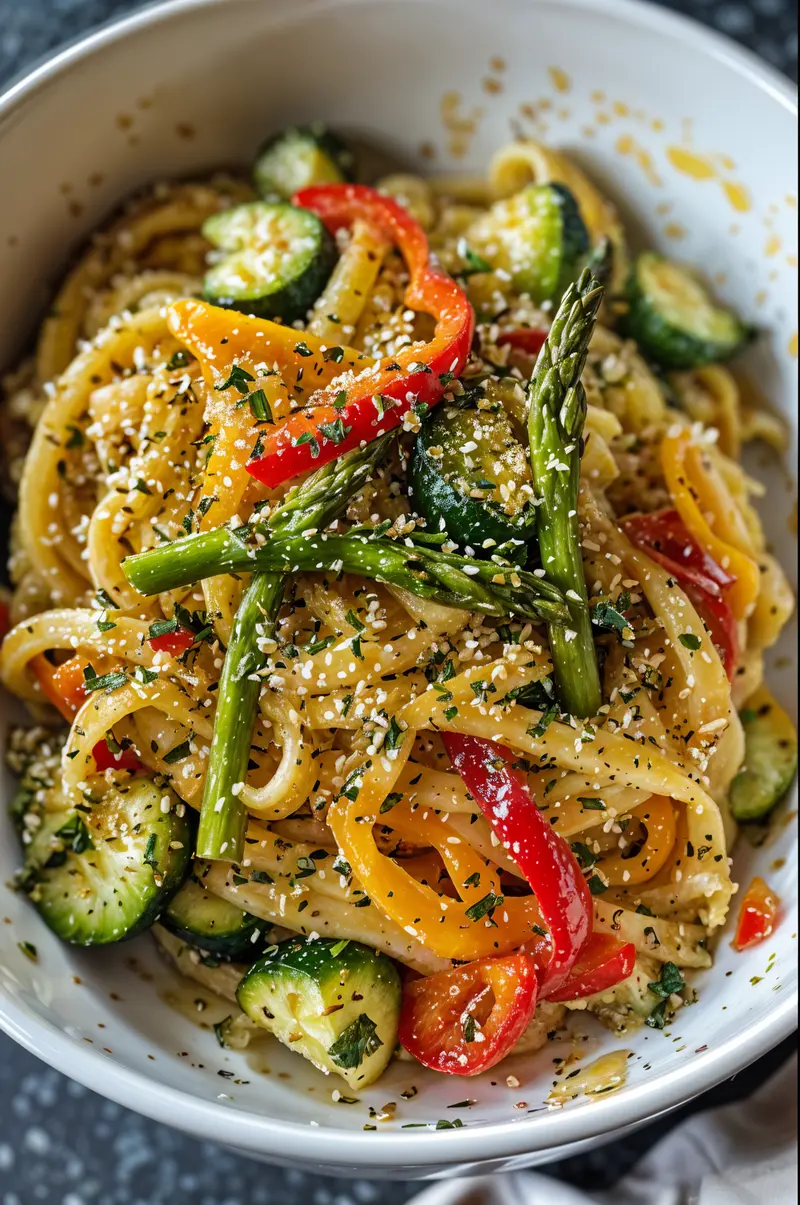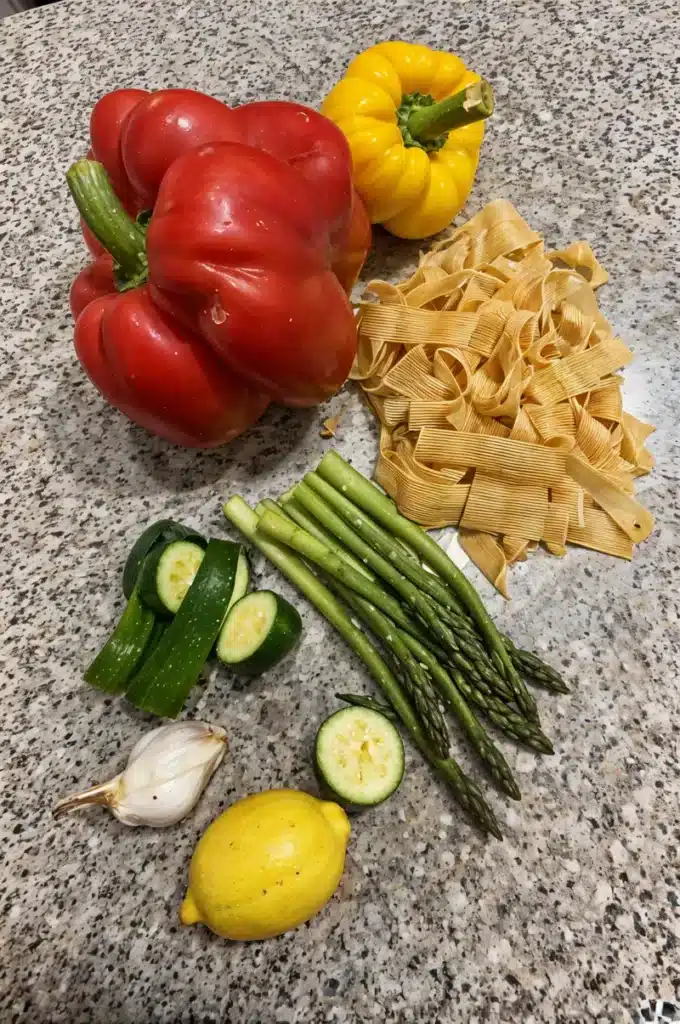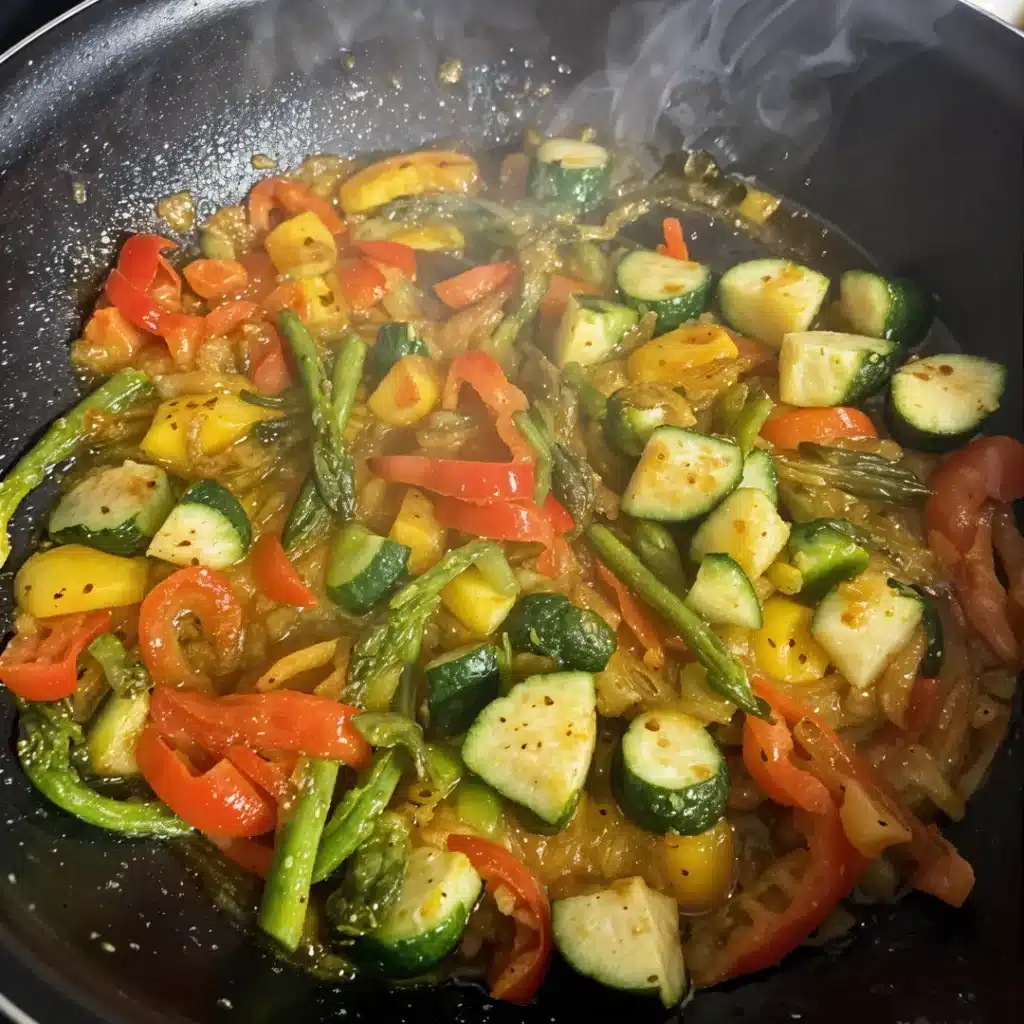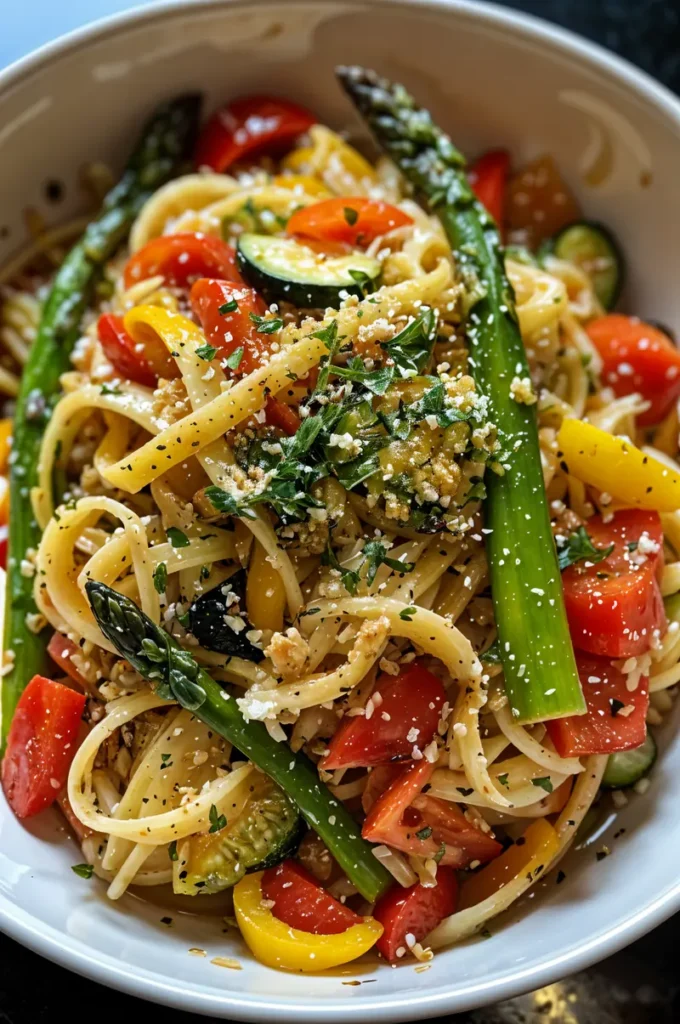Easy Gluten Free Pasta Primavera Recipe (Dairy-Free & Healthy)

Hi there! I’m Sunny. My journey with dairy-free cooking began when I had to eliminate milk and cheese from my diet. At first, it felt overwhelming—but over time, I learned how to create delicious meals without sacrificing flavor.
Today, I’m sharing a recipe that’s perfect for weeknights: Gluten Free Pasta Primavera. This colorful, veggie-packed pasta is naturally light, full of fresh flavor, and easily made dairy-free. Using your favorite gluten-free pasta and a simple olive oil or lemon sauce, you’ll have a vibrant dish that’s as healthy as it is satisfying.
Whether you’re gluten-free, dairy-free, or simply craving a fresh pasta dish, this recipe will become a go-to in your kitchen. Let’s dive in!
Why You’ll Love This Gluten Free Pasta Primavera
What is Pasta Primavera?
Pasta Primavera is a classic Italian-American recipe where pasta is tossed with fresh, seasonal vegetables. The word “Primavera” means “spring” in Italian, reflecting the bright, colorful veggies traditionally used. In this version, we’re transforming it into a gluten free pasta primavera that’s light, healthy, and perfect for anyone following a gluten-free or dairy-free diet.
Why Go Gluten Free and Dairy Free?
For those sensitive to gluten or dairy, finding satisfying pasta dishes can feel limiting. That’s why this gluten free pasta primavera recipe is such a winner:
- Gluten-free pasta (like brown rice or quinoa varieties) makes this dish safe for celiac diets.
- A naturally dairy-free olive oil or lemon sauce keeps it plant-based and lighter than cream-heavy recipes.
Whether you’re eating gluten-free for health or lifestyle reasons, this recipe delivers on both flavor and nutrition.
Another colorful and satisfying dish is this chickpea and veggie Buddha bowl—packed with plant-based protein and perfect for meal prep.
Personal Story: My Weeknight Go-To Meal
In my own kitchen, this easy gluten free pasta primavera has become a weeknight lifesaver. It’s simple to throw together with whatever veggies I have on hand. I especially love tossing zucchini, asparagus, and bell peppers with freshly cooked gluten-free pasta and a drizzle of olive oil. It’s hearty enough to be satisfying but light enough for a quick meal.
Trust me—once you try it, this pasta dish will become a regular part of your meal rotation.
Ingredients You’ll Need
Best Gluten-Free Pasta Types
For a perfect gluten free pasta primavera, choosing the right pasta makes all the difference. Here are my top picks:
- Brown rice pasta: Mild flavor and great texture.
- Quinoa pasta: Protein-rich and slightly nutty.
- Chickpea or lentil pasta: Higher in fiber and protein, but slightly firmer.
- Gluten-free spaghetti or penne: Traditional shapes that work well for tossing with sautéed veggies.
Cook your pasta just until al dente to avoid mushiness. I recommend tossing cooked pasta in a little olive oil to prevent sticking while preparing your vegetables.
Seasonal Vegetables to Use
Pasta primavera shines with colorful, crisp vegetables. Feel free to mix and match depending on what’s fresh:
- Bell peppers (red, yellow, or orange)
- Zucchini or yellow squash
- Asparagus
- Cherry tomatoes
- Broccoli florets
- Carrots (julienned or thinly sliced)
- Sugar snap peas or green beans
- Spinach or baby kale (added at the end)
Pro tip: Aim for a rainbow of colors to make your dish visually stunning.

Sauce Ingredients for a Dairy-Free Option
While classic primavera often uses cream or parmesan, this gluten free pasta primavera keeps things dairy-free yet flavorful:
- Extra-virgin olive oil (2–3 tablespoons)
- Fresh garlic (2–3 cloves, minced)
- Lemon juice (from 1 fresh lemon)
- Salt and black pepper (to taste)
- Optional: Nutritional yeast for a cheesy, dairy-free flavor boost
If you prefer a creamy texture:
- Use a splash of unsweetened coconut milk or a homemade cashew cream as a sauce base.
That’s all you need for a simple, wholesome meal that’s as easy to prepare as it is satisfying.
Step-by-Step Recipe
Cooking the Pasta
- Boil Water: Fill a large pot with water. Add a generous pinch of salt and bring it to a boil.
- Cook the Pasta: Add your choice of gluten-free pasta—penne, spaghetti, or rotini work great. Stir occasionally to prevent sticking.
- Check for Al Dente: Gluten-free pasta tends to cook faster. Test a piece 1–2 minutes before package instructions suggest.
- Drain & Oil: Drain the pasta, rinse lightly with warm water to remove excess starch, and toss with a tablespoon of olive oil to prevent clumping. Set aside.
Sautéing the Vegetables
- Heat Olive Oil: In a large skillet or sauté pan, heat 2–3 tablespoons of extra-virgin olive oil over medium heat.
- Sauté Garlic: Add minced garlic and cook for about 30 seconds until fragrant—be careful not to burn it.
- Add Firm Vegetables First: Start with carrots, asparagus, or broccoli. Sauté for 2–3 minutes to soften.
- Add Softer Vegetables: Toss in zucchini, bell peppers, and snap peas. Cook another 4–5 minutes, stirring gently, until just tender but still vibrant.
- Season: Add salt, pepper, and a squeeze of lemon juice to brighten flavors.
- Optional Greens: Stir in spinach or kale at the end and let wilt for about 1 minute.

Assembling the Primavera
- Combine Pasta & Veggies: Add cooked pasta to the skillet with the vegetables. Toss everything together over low heat for 1–2 minutes, allowing flavors to combine.
- Adjust Seasoning: Taste and add more salt, pepper, or lemon juice as needed.
- Optional Add-Ins: For extra richness, drizzle with more olive oil or stir in a splash of unsweetened coconut milk.
- Serve Hot: Plate your colorful gluten free pasta primavera immediately. Garnish with fresh herbs like basil or parsley if desired.
If you prefer a one-pan protein-packed dinner, try this lemon garlic chicken with roasted veggies—naturally gluten free and family-approved.
Expert Tips for Perfect Results
How to Keep Pasta from Getting Mushy
One common issue with gluten free pasta primavera is overcooked, mushy pasta. Here’s how to avoid that:
- Cook to al dente: Always check your pasta a minute or two before package directions suggest.
- Rinse briefly after draining: This removes excess starch that can make gluten-free pasta sticky.
- Toss with olive oil: After draining, coat your pasta lightly with oil to prevent clumping.
Best Vegetable Combinations
Mix up your pasta primavera based on what’s in season:
- Spring: Asparagus, peas, carrots, baby spinach.
- Summer: Zucchini, bell peppers, cherry tomatoes, fresh basil.
- Fall: Broccoli, kale, roasted carrots.
Aim for a variety of textures—crisp-tender veggies work best in this light pasta.
Creamy vs. Olive Oil-Based Sauces
Prefer a creamy sauce? No problem! Here are your dairy-free options:
- Olive oil & lemon (classic): Light, fresh, and naturally vegan.
- Coconut milk splash: Adds subtle creaminess without overpowering the veggies.
- Cashew cream sauce: Blend soaked cashews with water and garlic for a creamy, plant-based coating.
- Nutritional yeast: Sprinkle into your olive oil sauce for a cheesy flavor without dairy.
Feel free to experiment. This recipe is versatile enough to adapt to your tastes.
Craving something with a savory twist? This shrimp stir fry with tamari sauce is quick, gluten free, and layered with umami flavor

Frequently Asked Questions
Is pasta primavera gluten-free?
Typically, no. Traditional pasta primavera uses wheat-based pasta. To make it gluten-free, substitute certified gluten-free pasta such as rice, quinoa, or lentil pasta. This recipe is a 100% gluten free pasta primavera.
What’s the trick to cooking gluten free pasta?
Stir pasta frequently to prevent sticking. Cook until just al dente—gluten-free pasta overcooks fast. After draining, rinse lightly and toss with olive oil to prevent clumping. These simple tricks help avoid mushy noodles.
What is pasta primavera sauce made of?
The sauce is usually light olive oil with garlic and lemon juice. For a dairy-free option, coconut milk or cashew cream can add creaminess. This keeps the sauce fresh and flavorful without any heavy cream.
What is a gluten-free option for pasta?
Try brown rice, quinoa, chickpea, or lentil pasta. These hold up well in vegetable-packed dishes. Gluten-free spaghetti or penne are both great for tossing with fresh vegetables in pasta primavera recipes.
For taco night, these ground beef tacos with corn tortillas deliver fast flavor in a naturally gluten-free format.
Conclusion
This gluten free pasta primavera is colorful, fresh, and perfect for quick weeknight meals. By using gluten-free pasta and a dairy-free sauce, you can enjoy a satisfying pasta dish that fits your lifestyle without sacrificing flavor.
I hope this recipe becomes one of your favorite go-to meals, just like it is in my kitchen. Feel free to mix and match veggies based on what’s in season or your personal taste.
If you’re craving dessert after this, try a simple dairy-free ice cream or coconut-based treat to round out the meal. Simple, comforting, and completely allergy-friendly—that’s my goal with every recipe I share.
Looking for more quick and easy gluten-free meal ideas? Explore these 20-minute gluten free dinner recipes for inspiration that fits your schedule.
Enjoy your bowl of gluten-free goodness!

Gluten-Free Pasta Primavera
Ingredients
Equipment
Method
- Bring a large pot of salted water to boil. Cook gluten-free pasta according to package instructions. Drain and set aside.
- Heat olive oil in a large skillet over medium heat. Add bell peppers, zucchini, and red onion. Sauté for 5–7 minutes until softened.
- Add cherry tomatoes, minced garlic, and red pepper flakes (if using). Cook for 2–3 minutes until fragrant and tomatoes soften slightly.
- Add cooked pasta to the skillet. Toss well to combine with vegetables. Season with salt and pepper to taste.
- Garnish with fresh basil and nutritional yeast or vegan parmesan if desired. Serve warm.






